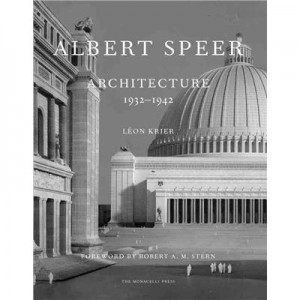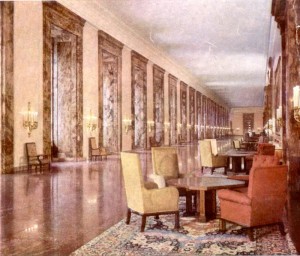
In 1985 Léon Krier published Albert Speer: Architecture 1932-1942, a monograph on the work of Hitler’s architect. The book, assembled with Speer’s assistance, was received with almost universal opprobrium, Krier was vilified, Speer’s version of classicism was ridiculed, the whole thing written off a sick joke. Now, almost thirty years later, Monacelli has produced a facsimile edition of the book, together with new material by Krier and a foreword by Robert A. M. Stern. Perhaps this time the reception will be different, but I doubt it. Speer’s brand of stripped classicism is so much associated with Nazism, and modernist ideologues have done such a good job of ensuring that this is so, that it is hard to evaluate the work objectively. Never mind that the architecture adopted by the Nazi regime is not therefore Nazi architecture—the stripped classicism, or New Classicism as its chief proponent Paul Cret called it, was a perfectly respectable style of that period. And never mind, as Krier points out, that other aspects of the Nazi regime—Leicas, Volkswagens, autobahns, rocketry—have easily shed their National Socialist roots. But if you are able, take a long hard look at Speer’s work, handsomely reproduced in photos, drawings and models, both architecture and urbanism. You may not agree with Krier that Speer was “one of the most famous architects of the twentieth century,” but it’s hard to deny him a leading position alongside such master of monumental classicism as Cret, John Russell Pope, and Gunnar Asplund. The Neue Reichskanzlei (demolished by the Soviets) in particular is a remarkable piece of work, inside and out.


Thanks. I’ve always wondered if Speer’s architect was as bad as his role in the Nazi leadership. Dispassionate comment has been scarce.